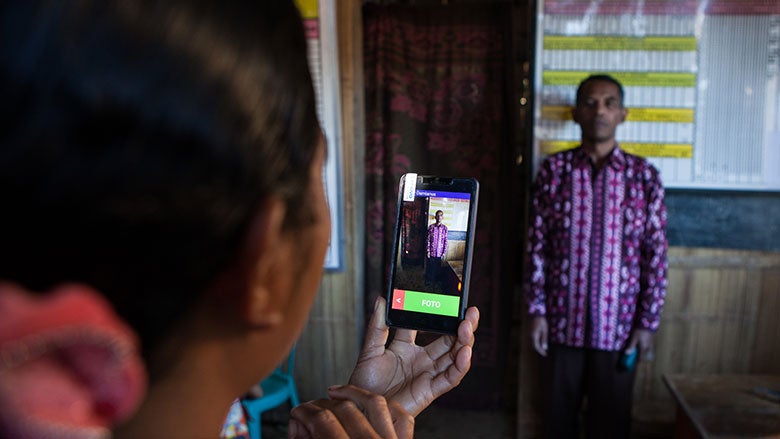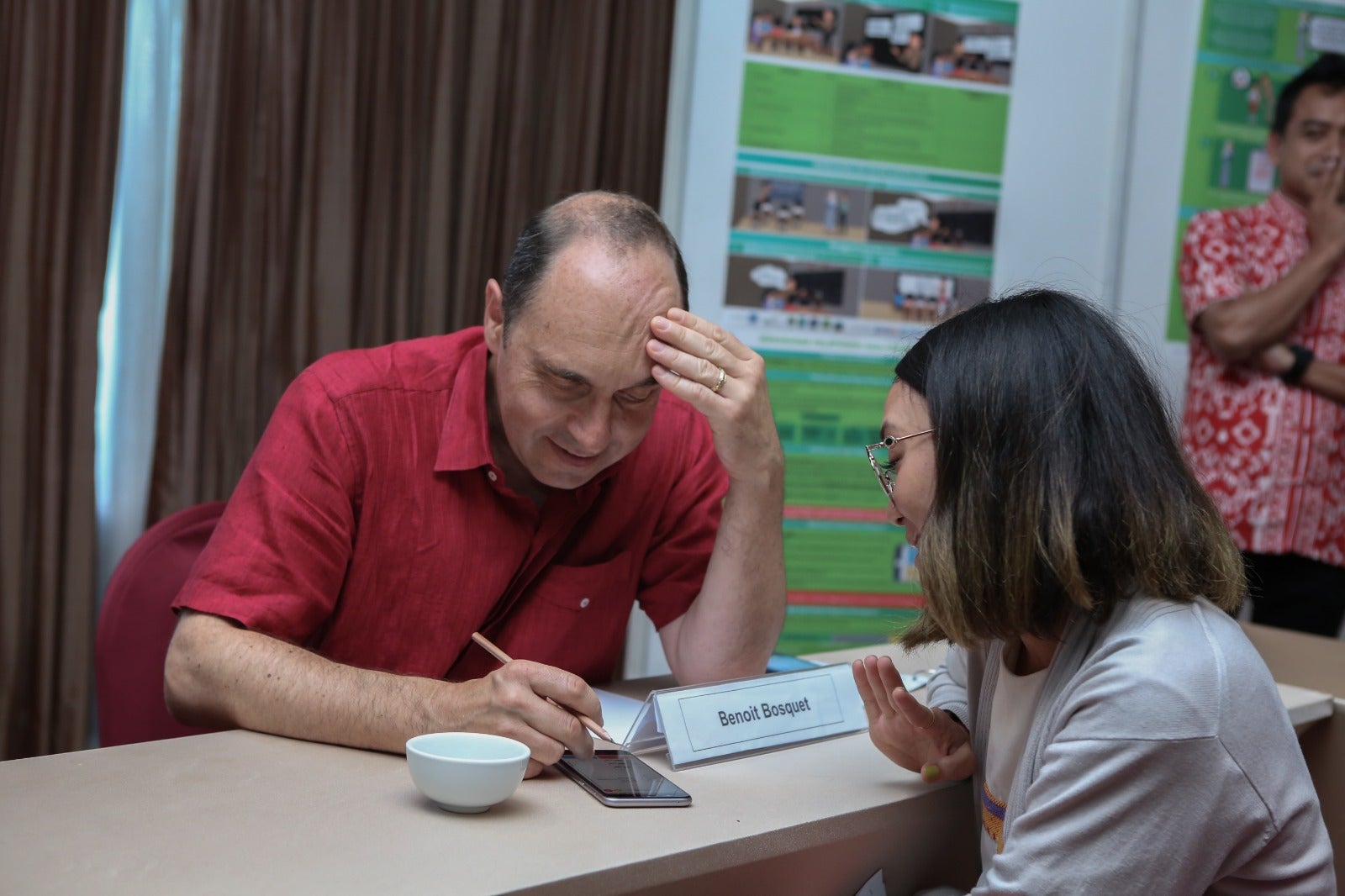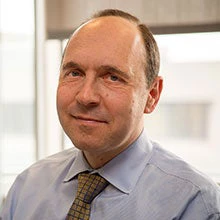 Indonesia Kiat Guru
Indonesia Kiat Guru
Indonesia is Southeast Asia’s biggest economy and boasts the world’s fourth largest population with an archipelago of thousands of tropical islands. Its cultural heritage dates back millennia. In a country this large and complex, how much can really change in a year? Quite a bit, it turns out.
Today, 51% of Indonesia’s population is under the age of 30 and the government is making a big push to improve human capital – investing billions for better education and health. But delivering basic services to a vast and diverse populace is challenging. Students and teachers in Indonesia’s remotest regions often trek long distances or take boats to get to school. Student and teacher absenteeism are common. Stunting is a critical issue, and 30.8% of all Indonesian children were stunted last year, a fact exacerbated by the uneven delivery of health, nutrition, water and sanitation, and education services.
But in a melding of the old and new, the World Bank is working with the Indonesian government to deliver better basic services through the convergence of three elements: the tradition of communal cooperation (gotong royong), technological innovation, and social accountability. This combination is already yielding impressive results -- in just one year, the national stunting rate has declined by 3.1%. In my recent trip to Indonesia, I saw first-hand how change is taking place.
Leveraging technology to monitor student learning and teacher performance
One morning in the capital, Jakarta, saw me 'going back to school’ – to Grade 4, with Indonesia’s KIAT Guru program. In this ‘class’, my ‘teacher’ handed me a smartphone and began administering a mathematics test. Very non-traditional and very quick. I answered a few questions, as did the other pretend students in the group. Our test results were scanned using a QR code, collated in real-time and displayed for all to see within seconds. The diagnostic test protects anonymity but lets the teacher and community gauge how the cohort performed as a whole. The test adapts to the test taker’s proficiency. The test results form the basis of an open discussion between teachers and communities on where improvements are needed, which are in turn monitored through a service agreement between teachers and their communities.
As a parent, I know how important education is. But I was truly surprised to learn that teachers willingly agreed to being monitored on their presence at school – with a daily, time- and geo-stamped selfie on the KIAT Kamera. Most surprising of all, teachers agreed to a pay cut if the community finds that their service does not meet the mutually agreed standards! Facilitators like Atik (pictured) are critical, working tirelessly to help teachers and communities appreciate the importance of better learning outcomes and commit to difficult but impactful reforms. The approach works, because the government at the village, district, and national levels also provide regulatory, technical and financial support to empower the communities. KIAT Guru has successfully improved teacher presence, parental involvement, and student learning outcomes over a span of two years.
Converging delivery of frontline services to prevent stunting
Nearly a thousand kilometers away in the city of Malang at the other end of Java, I used another mobile app called eHDW (short for Electronic Human Development Worker). In the last year, the government’s Nutrition and Early Years program has deployed 33,000 HDWs who work with communities and service providers to address service gaps linked to stunting. I met Asfiatul, an HDW who uses the app to map basic services in her village, diagnose access constraints, report and monitor the convergence of nutrition interventions. The app also offers an array of training and knowledge materials, task management functions and data collection tools. With the app, village development planning can now be based on regular and frequently updated data.
Human Development Workers like Asfiatul help communities identify their basic service needs, and hold service providers and local governments accountable for providing the most needed services. In Tangkilsari, East Java, I observed a busy village clinic that provides nutrition consultations to parents and vaccinations to children, and had the pleasure of vaccinating a three-month old baby against polio. I also visited an early childhood education facility. In Gunung Roggo, East Java, I saw immense progress on connecting the entire village to a clean water pipeline this year. The village is one of over 22,000 in Indonesia to have benefited from better water and sanitation facilities as part of the government’s community-driven PAMSIMAS program.
Scaling up for better learning and health outcomes across Indonesia
East Java, Indonesia
I was humbled to witness the dedication of Indonesia’s frontline service providers, facilitators, and communities. And they are not alone in their initiatives. The government recognizes the severity of its stunting challenge and has empowered its frontline workers through nearly $4 billion per year to converge nutrition interventions across health, water and sanitation, early childhood education, social protection and food security. Certified, remote area teachers receive three times their base salaries. Each of Indonesia’s nearly 75,000 villages receives over $100,000 from the central government annually to spend on development. The KIAT Guru, Indonesia Nutrition and Early Years, and the Institutional Strengthening for Improved Village Service Delivery projects are effecting systemic change to ensure that these massive government resources are spent effectively for maximum impact.
This unique approach of using disruptive technology for social outcomes made me wonder about potential applications in other sectors such as combatting climate change, monitoring and reducing plastic waste, protecting the environment, broader social risk management, for example. Indonesia’s large population is a challenge for development but it is also a mighty force for good when equipped with appropriate tools.
More info:
- KIAT Guru (Project info)
- KIAT Guru Blog
- KIAT Kamera (Video)
- Indonesia Nutrition and Early Years (Project info)
- Human Development Workers (Video)
- Institutional Strengthening for Improved Village Service Deliver (Project info)
- Human Capital Project
- PAMSIMAS community-based drinking water supply and sanitation program






Join the Conversation